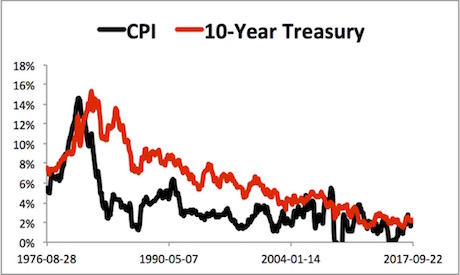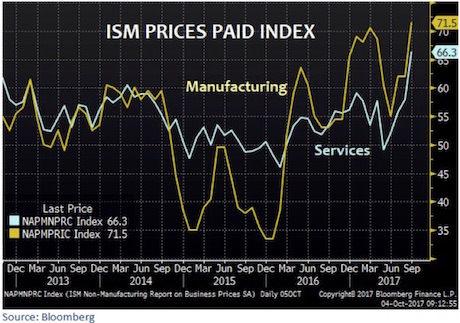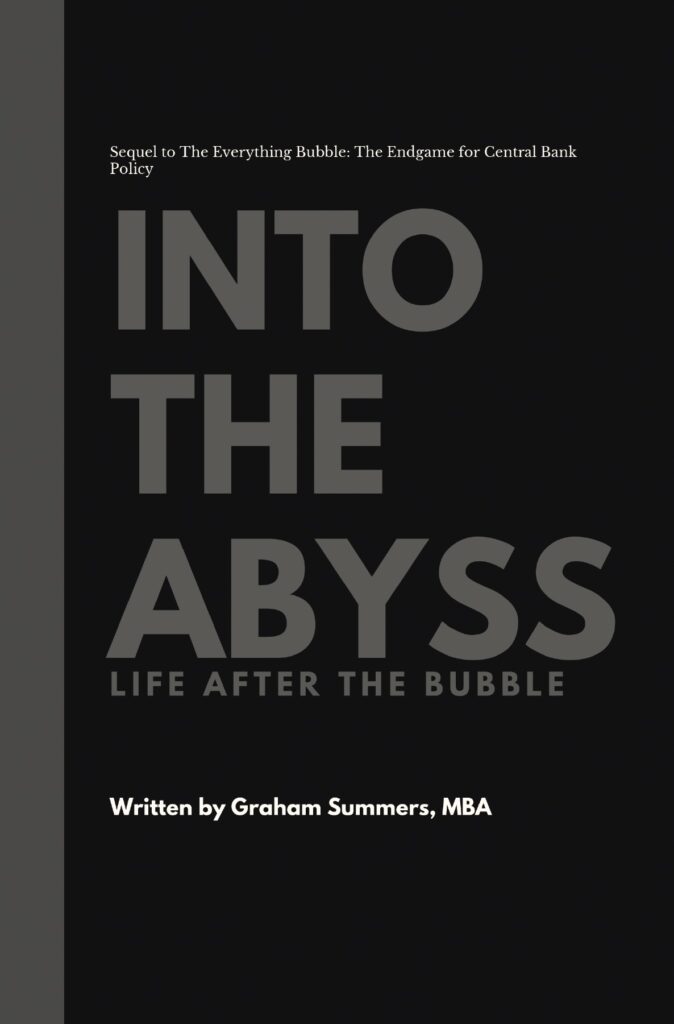The bubble in sovereign bonds is looking dangerously close to popping.
And ironically, what could burst it is the very thing Central Banks have been pursuing aggressively for the last 9 years: inflation.
As I explain in my bestselling book The Everything Bubble, Treasury yields adjust to account for inflation. The relationship is not perfect as bonds are also priced based on economic activity. However, the fact remains, if the rate of inflation spikes, Treasury yields rise as well to account for this.
You can see this in the chart below:
Put simply, if inflation rises, so do Treasury yields.
This in turn means Treasury prices will fall (bond prices fall as yields rise).
And that is a HUGE problem for the Federal Reserve.
The entire reflationary move in the financial system since 2008 was based on the Fed creating a bubble in US Treasuries or sovereign bonds. The Fed did this by cutting rates to zero, pulling down the short end of the bond market. It then targeted the long end of the market with QE programs.
Put simply, the Fed tried to corner the Treasury market, thereby creating a bubble in the most senior asset class in the US financial system. But in order for the Fed to create this bubble, it had to print a massive amount of money ($3.5 trillion or so).
Between this, and the Fed maintaining Zero Interest Rate Policy (ZIRP) for seven years, the Fed unleashed inflation. It’s taken longer than one would expect, but it’s finally here.
As I write this, the Fed’s official inflation metric, the CPI, is already clocking in above the Fed’s target rate of 2%.
Similarly, the Fed’s “Sticky CPI” which measures price movements in assets that are slow to adjust to inflation, is clocking in over 2%.
The ISM Prices Paid Index (a survey for managers in the corporate sphere) also shows a spike in both manufacturing AND services prices.
This is critical as it shows that not only is inflation translating into higher prices on manufactured goods, but it also shows that even the services side of the economy is recognizing the threat. Put simply, the cost of everything is rising.
Indeed, this is finally translating into higher wages in the corporate arena (hourly wages are now clocking in at nearly 3%). This is particularly critical because once workers are demanding higher wages due to higher costs of living (inflation) it means that inflation is now firmly entrenched in the economy.
U.S. government debt yields jumped Friday after metrics in the latest Labor Department jobs report showed budding signs of inflation. The closely watched average hourly wages figure rose by an annualized 2.9 percent, a faster pace than the Federal Reserve’s 2 percent target for inflation.
Source: CNBC
Put simply, inflationary pressures are on the rise. And they are going to implode the bond market unless Central Banks step back from the endless money printing.
In that note, we are putting together an Executive Summary outlining all of these issues as well as what’s to come when The Everything Bubble bursts.
It will be available exclusively to our clients. If you’d like to have a copy delivered to your inbox when it’s completed, you can join the wait-list here:
https://phoenixcapitalmarketing.com/TEB.html
Best Regards
Graham Summers
Chief Market Strategist
Phoenix Capital Research






